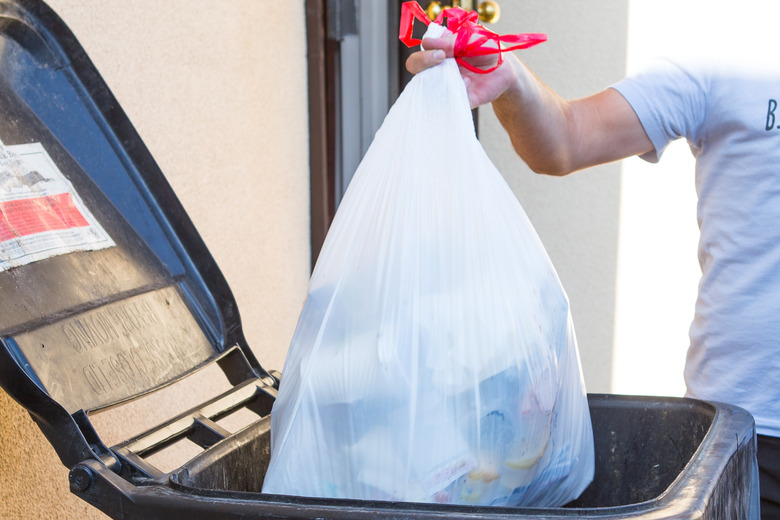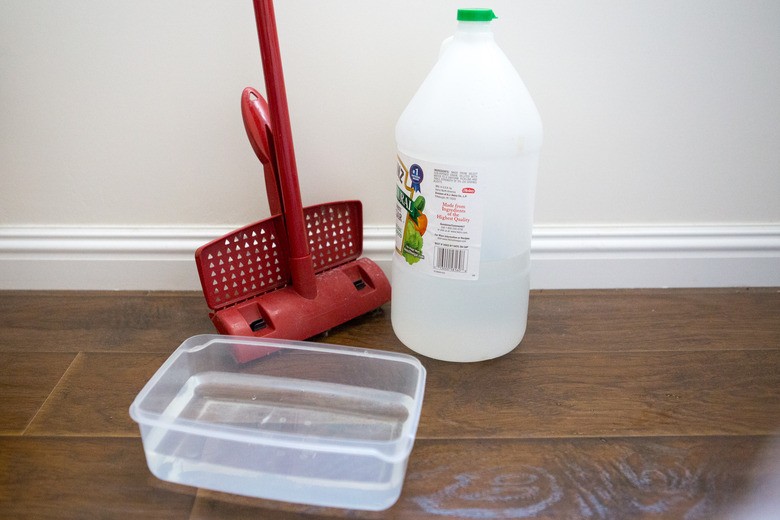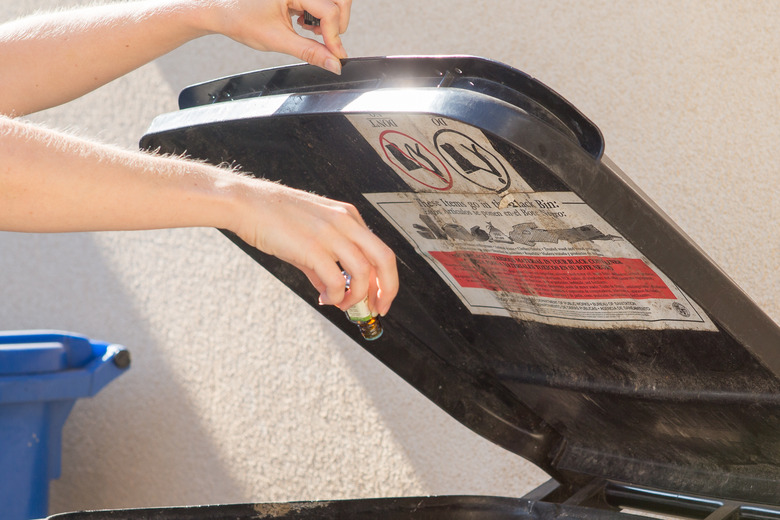How To Get Rid Of Maggots In Outdoor Garbage Cans
If you don't clean your outside garbage can or recycling bin on a regular basis, you may discover maggots when you open the lid. This can be a frequent problem in warm climates where garbage decays rapidly.
Maggots resemble little beige-white worms and are actually fly larvae. They are introduced to a garbage can when flies get inside to feed on organic garbage and lay their eggs in the garbage can. Within a short time, the eggs hatch and become the tiny larvae known as maggots. Maggots are quite small, resembling squirming grains of white rice when you discover an infestation in your garbage can. Repulsive though they may seem, their appearance is a simple factor of biological science. In nature, maggots serve a useful function by consuming the carcasses of dead animals, but of course they are not welcome in your garbage can. Fortunately, they can be easily eliminated and prevented.
To stop the infestation, you'll need to completely remove all of the maggots from the can and give it a deep cleaning to remove the organic food residue that drew the flies in the first place, then find a means of securing the garbage can lid securely in the future so that flies cannot enter.
Here's a simple method for eliminating and preventing maggots:
1. Remove the Trash
To eliminate the maggot infestation, first remove all trash from the can. Either wait until your garbage service picks up the trash on its next regular collection day, or take the trash to the dump yourself to speed up the process. Once you've taken out all of the trash bags, remove any loose items or debris at the bottom of the can, as well.
2. Kill the Maggots
To kill any remaining maggots or fly eggsin the garbage can, rinse the bin with boiling water. Boil the water in a pan on your stove and carefully take it outdoors. Use a sponge mop to clean all of the inside walls with the hot water. Allow the water to sit in the can for about a half hour and then pour it out.
3. Disinfect and Deoderize
- After rinsing and scrubbing with the hot water, make a cleaning solution of 1 part distilled vinegar and 2 parts warm water. The vinegar will disinfect and deodorize the can so you don't have to use any toxic chemicals.
- Scrub the entire inside of the can and the lid with the vinegar solution and a sponge mop. Be thorough, making sure that you get into every nook and cranny. Allow the vinegar mixture to rest in the can for up to a half hour, giving it ample time to neutralize the garbage odor.
- Pour the solution out and rinse the can with clean water from the garden hose. Leave the lid off the can and allow the container to completely air dry before putting a new trash bag into it.
4. Prevent Future Infestations
There are several routine steps you can take to prevent maggots in the future:
- After deep-cleaning your garbage can, prevent new maggot infestations by scrubbing the container down with the vinegar and water solution on a weekly basis. Always verify the can is completely dry before closing the lid, as maggots are attracted to moisture.
- Always seal your trash in plastic garbage bags rather than throwing it directly into your garbage can. This is particularly important when disposing of meat and bone scraps, which attract flies.
- You can also deter flies from entering the can by placing a few drops of peppermint essential oil or some crushed bay leaves in the bottom of it, as the pests are known to dislike these substances.
- The simplest solution of all: keep the lid securely fastened on the garbage can to prevent flies from getting inside.



